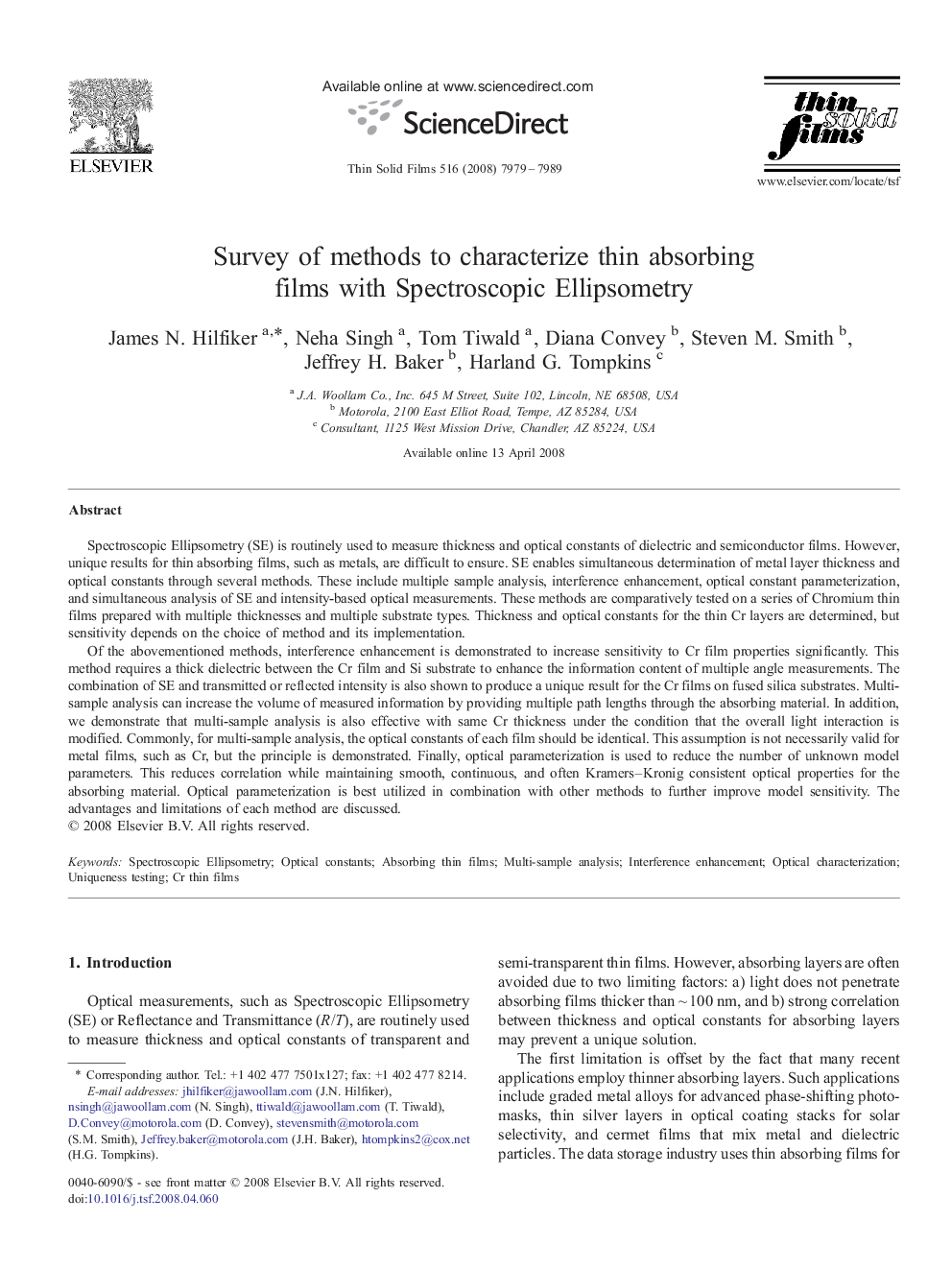| Article ID | Journal | Published Year | Pages | File Type |
|---|---|---|---|---|
| 1672584 | Thin Solid Films | 2008 | 11 Pages |
Spectroscopic Ellipsometry (SE) is routinely used to measure thickness and optical constants of dielectric and semiconductor films. However, unique results for thin absorbing films, such as metals, are difficult to ensure. SE enables simultaneous determination of metal layer thickness and optical constants through several methods. These include multiple sample analysis, interference enhancement, optical constant parameterization, and simultaneous analysis of SE and intensity-based optical measurements. These methods are comparatively tested on a series of Chromium thin films prepared with multiple thicknesses and multiple substrate types. Thickness and optical constants for the thin Cr layers are determined, but sensitivity depends on the choice of method and its implementation.Of the abovementioned methods, interference enhancement is demonstrated to increase sensitivity to Cr film properties significantly. This method requires a thick dielectric between the Cr film and Si substrate to enhance the information content of multiple angle measurements. The combination of SE and transmitted or reflected intensity is also shown to produce a unique result for the Cr films on fused silica substrates. Multi-sample analysis can increase the volume of measured information by providing multiple path lengths through the absorbing material. In addition, we demonstrate that multi-sample analysis is also effective with same Cr thickness under the condition that the overall light interaction is modified. Commonly, for multi-sample analysis, the optical constants of each film should be identical. This assumption is not necessarily valid for metal films, such as Cr, but the principle is demonstrated. Finally, optical parameterization is used to reduce the number of unknown model parameters. This reduces correlation while maintaining smooth, continuous, and often Kramers–Kronig consistent optical properties for the absorbing material. Optical parameterization is best utilized in combination with other methods to further improve model sensitivity. The advantages and limitations of each method are discussed.
